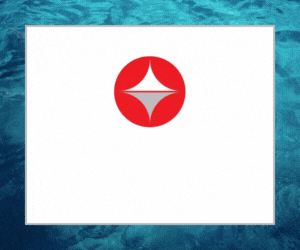Much is written on the topic of sustainability today. It relates to our personal choices, professional environments, and the world at large. We are familiar with the plight of the oceans, the perils of plastic pollution, and the efforts being made on a global scale to save the planet. And when it comes to yachting, vessels are now required to be IMO Tier-III compliant. But what does that mean? Why does it matter? And what is DYT Yacht Transport doing about it?
Put forward by the UN’s International Maritime Organisation (IMO), Tier III of the IMO NOx regulations aims to reduce nitrogen oxide (NOx) emissions by 70%, compared to the current Tier II standards. It applies to vessels that entered construction on or after 1 January 2016 and that operate in Emission Control Areas. At present, those areas include North America, the US Caribbean, the Baltic Sea, and the North Sea, but because any vessel that passes through needs to comply, almost all yachts are required to adopt Tier III (including sub 500GT vessels by Jan 2021).
Sustainability has always been part of DYT’s heritage. Since Dockwise was founded in 1993, and through their rebrand in 2013, the company has gone above and beyond what is required. This is why, with IMO Tier-III now at the forefront of marine regulations, it’s not only their latest and largest semi-sub that is getting the sustainable treatment. When DYT’s Yacht Servant launches in 2021, it will be IMO Tier-III compliant. But their second largest vessel Yacht Express, built in 2007, has been retrofitted with a scrubber that not only removes sulphur from its emissions but also a significant amount of black carbon and particulate matter from the exhaust gasses.
Construction commenced on DYT’s Yacht Servant in July and, once completed, the vessel will be the largest of its type. At the celebratory keel-laying event, the usual good luck markers, including the laying of a commemorative coin under the keel, still took place, though on a scaled-down, socially distanced format. The laying of this keel will kickstart a new age of capability for DYT and Laura Tempest, General Manager at DYT comments:
“This is not just the laying of a keel, but it is also the start of a new era in yacht transport. This will be the largest semi-submersible vessel, dedicated to transporting yachts ever built. We are very proud, as this will set a new benchmark in the yacht transport industry.”
But the sustainability advantages of yacht transport go much further. A key benefit has always been that just one of their semi-submersible vessels carrying 30-plus yachts produces far less pollution than many yachts travelling independently. That in itself makes it an appealing proposition. For yacht owners, the lack of wear and tear is of real value, too. Not all yachts are built for transatlantic crossings, and even those that are capable don’t always survive it without incident. DYT’s fleet of semi-sub vessels slice through waves like a hot knife through butter and the unique float-on, float-off system is considered to be the safest and most efficient out there.
Yacht transport also offers yacht owners significant fuel efficiencies, and equally as important, it rests the crew. When a rigorous charter schedule or remote cruising put round the clock demands on crew, it becomes imperative that they are given time to relax and regroup, otherwise that level of impeccable service itself becomes unsustainable. Yacht transport delivers on both fronts; crew are rested and the yacht still reaches its destination on time.
When the coronavirus pandemic hit at the start of 2020 DYT did their best, like everyone else, to be as reactive as possible. Now, as the world begins to transition out of lockdown and destinations reopen, DYT’s trusted and reliable yacht transport service is on hand to provide safe passage to all who require it.
Among the many cruising grounds that the yachting fraternity call home, the Mediterranean has seen the quickest recovery from Covid-19. Montenegro, Malta and Tunisia were among the top six European countries to record the lowest number of active cases and subsequently lift travel bans. France, Italy and parts of Spain have also now reopened ports, permitted cruising and charter is available to those from EU and Schengen countries.
Further afield in Australasia, Fiji is open to superyachts regardless of nationality and Tahiti’s borders are open to international tourism. With newly relaxed charter laws creating a surge of interest in its colourful waters rich in marine life, Australia is inviting yachts that are currently within its borders to freely charter. Likewise, in the Maldives, the Seychelles, the Bahamas and across the United States, waters are open to tourism, albeit with some quarantine restrictions in place.













.gif)







